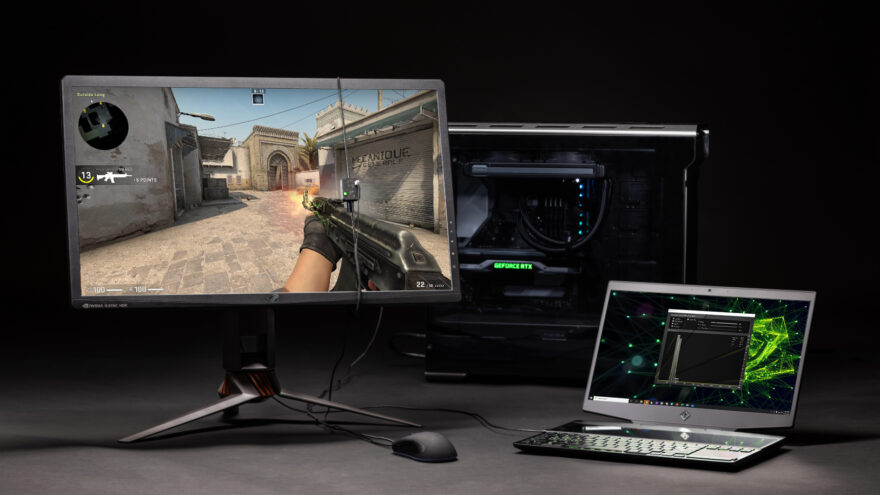Nvidia LDAT & PCAT – What Are They?

We’ve been in the benchmarking business for well over a decade now, and even before that, we’ve been building, overclocking, and testing our own hardware for even longer too. As PC gamers and content creators, we’re always looking to ensure we get the best performance from our hardware. It doesn’t always have to be the most extreme hardware either, but at the same time, it’s always good to know that whatever your configuration, it’s running as well as it possibly could. What’s interesting, however, is that how you record that performance is starting to change, and that’s where the Nvidia LDAT & PCAT hardware comes into play.
Nvidia LDAT & PCAT
One sure-fire way of telling if your gaming PC is fast or not is to run a gaming benchmark or even a benchmark suite like 3DMark. Actually, there’s still absolutely nothing wrong with doing that, it’s a great way of seeing if your rig is faster than it was before you made changes, or better than another system entirely. While they’ve been around for a little while now, we’ve finally got our hands on another method. The Nvidia LDAT and PCAT hardware! LDAT is the Latency and Display Analysis Tool, while PCAT is the Power Capture Analysis Tool. There’s also a piece of software for the two, which is FrameView 1.1. So let’s take a deep dive at what the heck all this stuff is, how it does it, and why it matters.

While Nvidia created this hardware for their internal testing, actually capable of testing any graphics card or API. So if you plug in a GTX 660 Ti, an AMD RX480, or any modern hardware, it doesn’t matter, so long as it’s PCIe 1 to 4, it’ll work. As for gaming, it supports all major APIs too, but more on that shortly.

Hardware and Software
- Latency and Display Analysis Tool (LDAT) – used to measure end-to-end system latency
- Power Capture Analysis Tool (PCAT) – used to measure total GPU board power in isolation
- FrameView 1.1 – Improved version of FrameView that ties everything together








